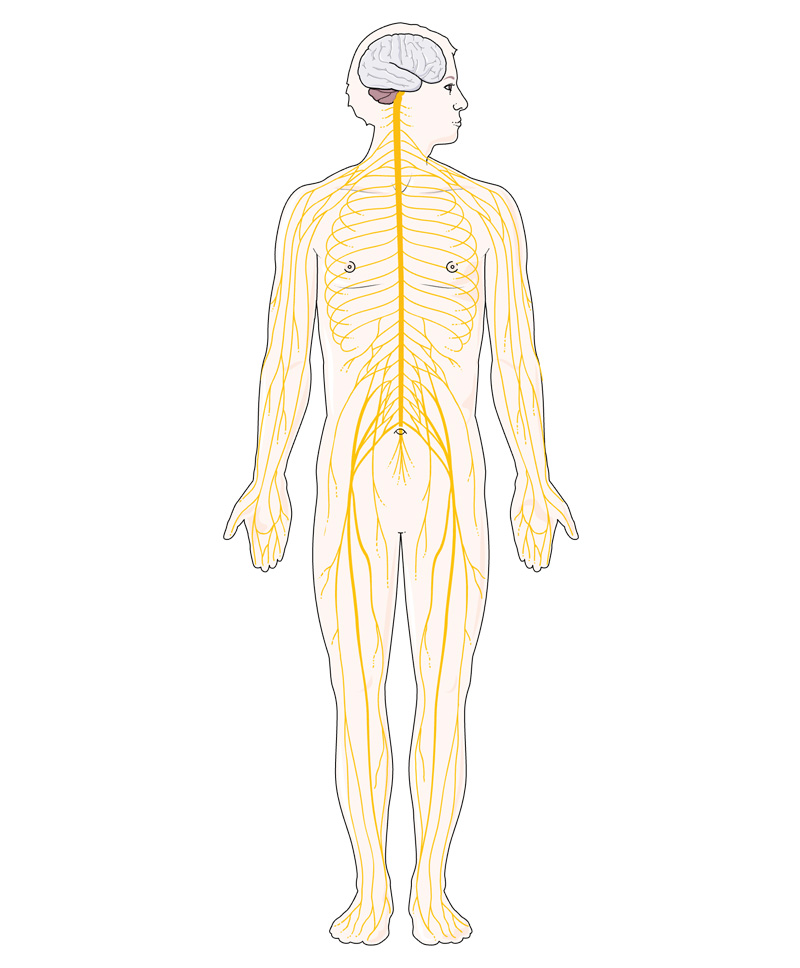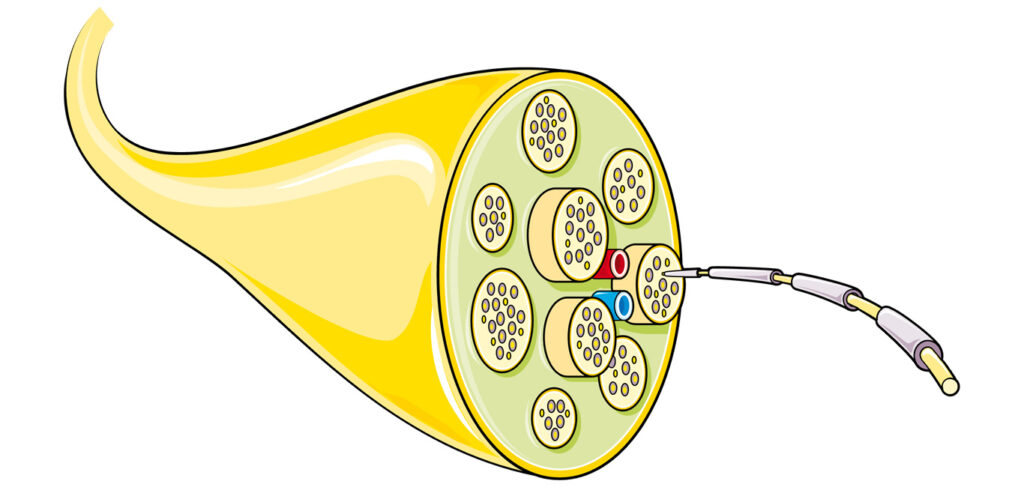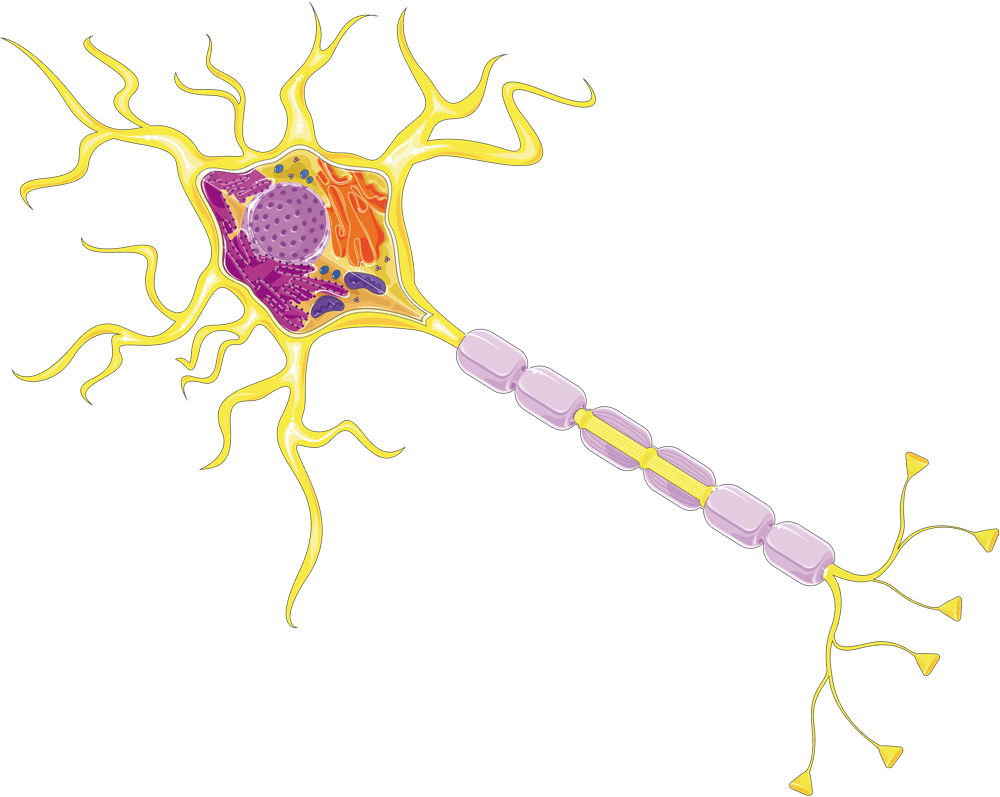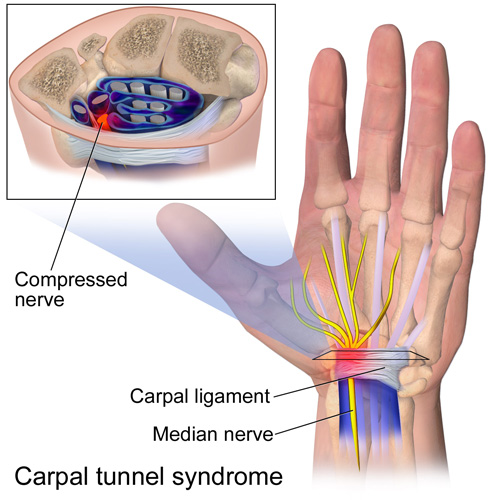Understanding the
Nervous System: From Brain to Fingertips
Human nerves make up an intricate network that controls movement and sensation. Understanding how nerves operate is crucial in managing pain effectively. For patients dealing with chronic pain a deeper look into the nervous system’s structure and role can shed light on various treatment approaches. Many different factors can affect the broad system of nerves including diabetes, poor circulation, nutritional deficiency, etc.


The Journey of Nerve Signals from Brain to Fingertips
- Brain: The process begins in the brain, where motor commands are generated, and sensory information is interpreted. Something like a brain injury could rewire your neural networks and previously normal sensation like someone tapping your shoulder – could be misinterpreted into being an extreme pain!
- Spinal Cord: Nerve impulses travel from the brain down the spinal cord, exiting through nerve roots that correspond to specific parts of the body. The spinal cord and nerves traverse tight bone spaces and can be impacted at many different junctions by arthritis or pathology.
- Peripheral Nerves then continue out the to the Arm and Hand: For example, the nerves of the neck will eventually branch into smaller and smaller nerve branches untill they hit the skin. This final sprout creates a highway of information from the fingertips of your skin all the way to your brain!
Sensory and Motor Functions
Nerves are responsible for two main types of functions:
- Sensory Nerves: These transmit signals about temperature, pain, and touch from the skin and deeper tissues back to the brain for interpretation.
- Motor Nerves: These carry impulses from the brain to muscles, enabling movement and strength.


Nerve-Related Pain Conditions
Dysfunction or injury to these nerves can lead to conditions such as:
- Neuropathy: Often resulting in numbness, tingling, or burning pain. This is often a pain full condition people with diabetes will develop, that we call Painful Diabetic Peripheral Neuropathy.
- Radiculopathy: Caused by nerve compression at the spinal root, frequently contributing to arm or hand pain. A common example is sciatica, when one of the nerves of the lower back gets pinched and a patient will develop painful shooting pain down the leg.
- Complex Regional Pain Syndrome (CRPS): An abnormal pain response that may involve sensory disturbances, swelling, or changes in skin temperature and color.
Interventional Pain Management for Nerve Pain
Our practice offers specialized treatments for nerve-related pain, including:
- Nerve Blocks: Injections that deliver medication directly to the affected nerve.
- Neuromodulation Therapies: Techniques such as spinal cord stimulation (SCS) and dorsal root ganglion (DRG) therapy can effectively manage chronic nerve pain.
- Minimally Invasive Procedures: Using fluoroscopy and ultrasound guidance, we target precise nerve pathways to reduce inflammation and improve mobility.

Our Treatment Approach
At Mosaic Pain and Medicine Rehabilitation, we take a multidisciplinary approach to back pain treatment, combining diagnostic expertise, interventional pain procedures, and rehabilitation strategies to provide lasting relief.
-

Comprehensive Lifestyle
Lifestyle Modification Combined with patient tailored cognitive behavioral therapy referral, nutrition, vitamin supplementation
-

Physical and Occupational Therapy
Physical and Occupational Therapy for Functional Improvement
-

Non-Opioid Medication Management
Medications non opioids oral medications
-

Targeted Injections for Pain Relief
Injections; targeting muscle, nerve, bone or sympathetic
-

Neuromodulation Techniques for Pain Management
Neuromodulation; spinal cord stimulation, dorsal root ganglion stimulation, peripheral nerve stimulation
-

Specialist Referrals for Advanced Care
Referral to my colleagues specialized in orthopedic surgery, neurosurgery or neuropsychology.
F.A.Q
General Questions
Nerve pain, also known as neuropathic pain, can result from nerve damage, diabetes (diabetic neuropathy), shingles (postherpetic neuralgia), sciatica, pinched nerves, multiple sclerosis, or injuries affecting the nervous system.
We offer medications (such as nerve pain relievers and anti-inflammatories), nerve blocks, radiofrequency ablation, spinal cord stimulation, transcutaneous electrical nerve stimulation (TENS), and physical therapy to help manage nerve pain.
You should seek medical attention if your nerve pain persists for more than a few weeks, worsens over time, causes numbness, tingling, or muscle weakness, or interferes with daily activities. Early intervention can help prevent further nerve damage.
Yes, many nerve pain conditions can be managed with non-surgical treatments, including medications, nerve stimulation, injections, and minimally invasive procedures like radiofrequency ablation or spinal cord stimulation. Surgery is only considered in severe cases.
Share this page:
Facebook
LinkedIn
Twitter
